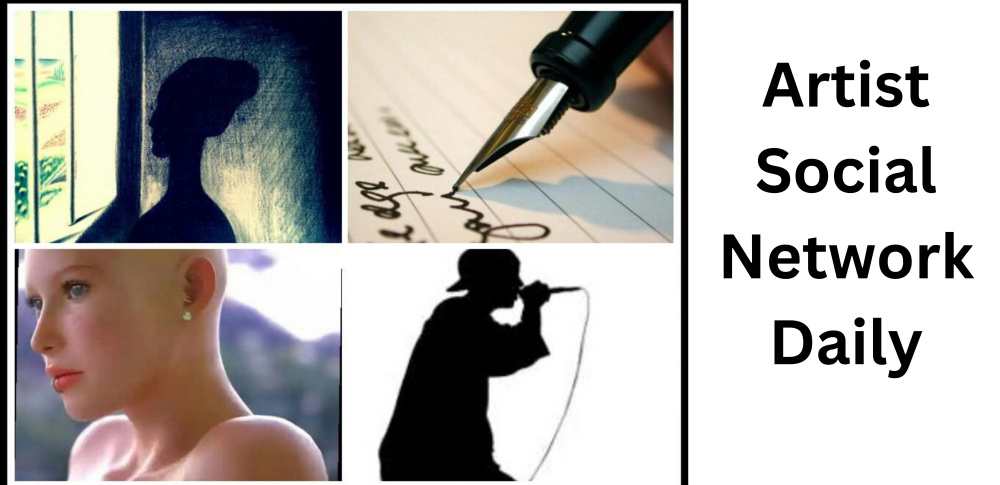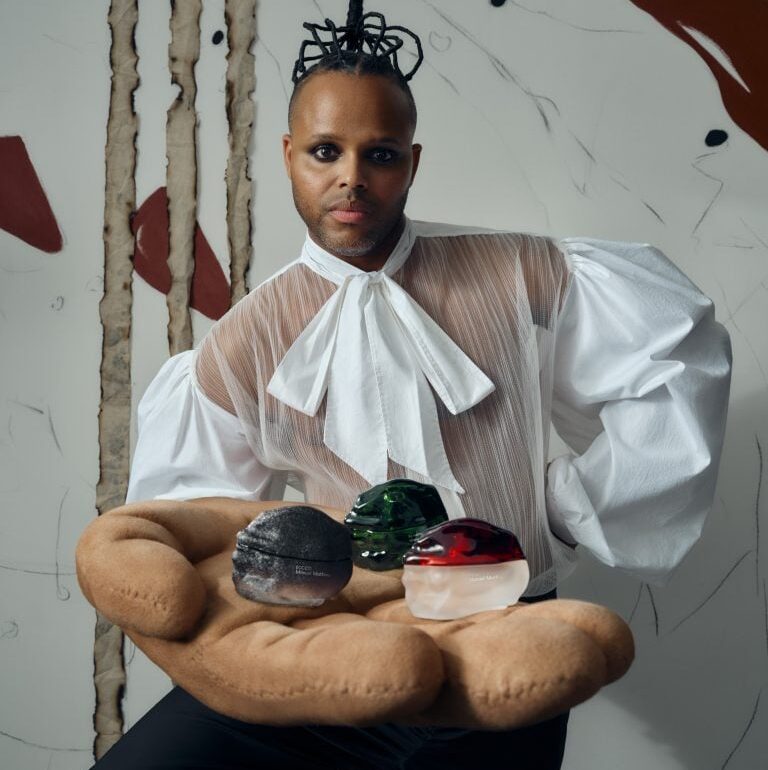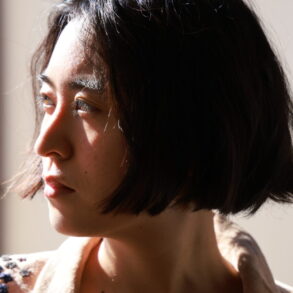When artist Manuel Mathieu touched down in Paris for a residency in 2022, he had a mission: to become a “nose.”
In the world of fragrance, a nose, or nez, is a colloquial term for a master perfumer (derived from classical French perfumery), and, as Mathieu quickly learned, involves upwards of seven to ten years of study and training to achieve the status. Facilitated through the residency, the artist, however, arrived at the next best thing, meeting and ultimately collaborating with master perfumer Juliette Karagueuzoglou of IFF, one of the most significant perfume producers in the world. Together, following months of work, Mathieu and Karagueuzoglou crafted three new perfumes—île noire, ECCCO, and Dsire—marking the artist’s first foray into the world of scent.
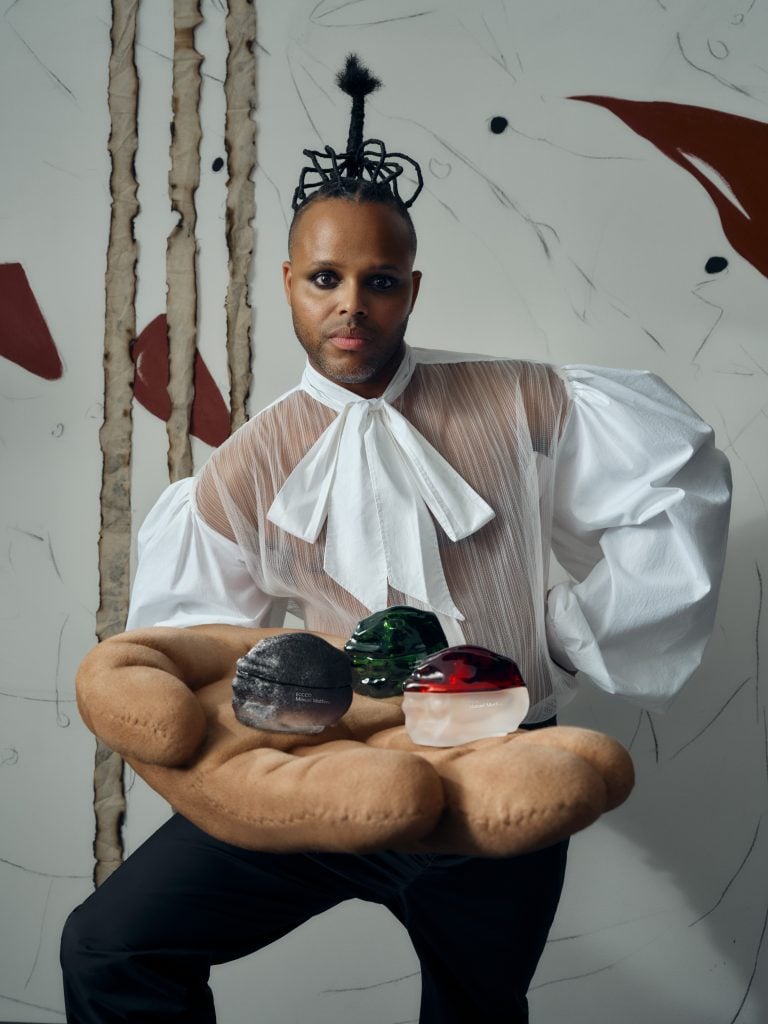
Courtesy of Manuel Mathieu Perfume.
Originally from Port-au-Prince, Haiti, Mathieu is a multidisciplinary artist working across drawing, ceramics, and installation, but is best known for his atmospheric paintings that toe the line between abstraction and figuration. Mathieu immigrated to Montreal, Canada, when he was 19, but Haiti and Haitian culture still figure heavily in his practice, and his work frequently taps into ideas around spirituality, nature, identity, and lived experience through the lens of both the individual and the collective.
From a conceptual standpoint, Mathieu’s approach to developing fragrances parallels that of his visual works, embracing the experiential difference between the two mediums. “I wanted to do something that accompanies people in their lives,” Mathieu said in an interview at a café in downtown New York. “I didn’t arrive [at IFF] telling them ‘I’m going to make a brand,’ I arrived there because I wanted to create an olfactory experience.”
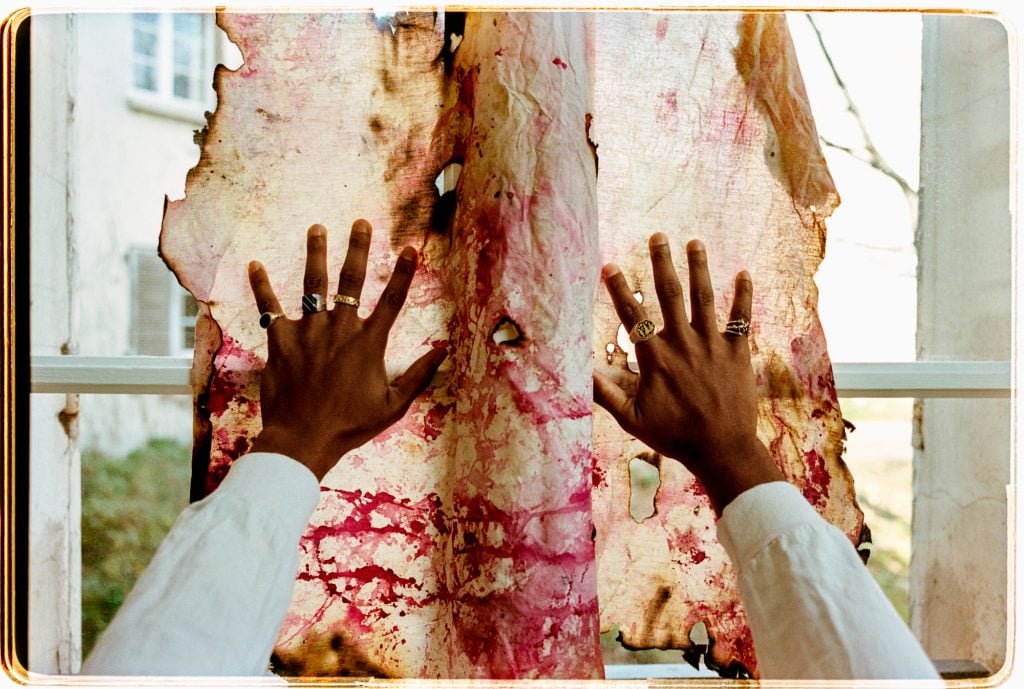
From Manuel Mathieu’s Paris Residency. Courtesy of Manuel Mathieu Perfume.
The olfactory experience, as Mathieu describes it, and scent-based art is a rapidly growing trend. In the Metropolitan Museum of Art’s 2024 Costume Institute show, “Sleeping Beauties,” artist Sissel Tolaas created specially formulated smells (she doesn’t use the term scent or fragrance) inspired by garments both included in the exhibition and from the collection. Also last year, “Scent & the Art of the Pre-Raphaelites” at the University of Birmingham’s Barber Institute of Fine Arts featured bespoke perfumes correlating to various paintings, offering an olfactory element to the otherwise purely visual show.
Paralleling this rising trend is the exploding interest in niche perfumes. Broadly speaking, niche perfumes are produced by independent fragrance houses that focus primarily—if not exclusively—on perfume and other scented products. Their scent profiles are geared toward a “niche” audience, unlike designer perfumes, which are aimed at mass appeal, or indie perfumes, where the owner is also the in-house perfumer and typically favors more avant-garde tastes. (The boundaries between these categories aren’t codified or regulated, however, so there is a degree of interpretation.)
Within this stratum, and against the pervasive growth in interest in all things fragrance, having an artist approach perfume-making in the manner of, say, a painter is an intriguing proposition.
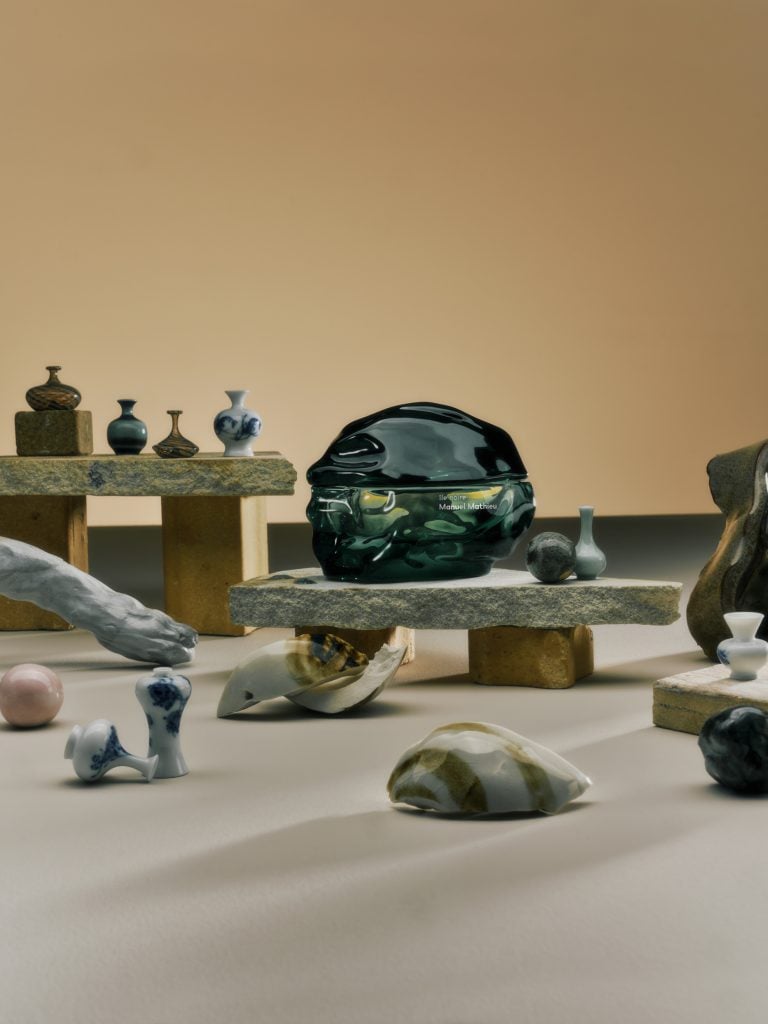
île noire. Courtesy of Manuel Mathieu Perfume.
Into the Olfactory
On his first day working with Karagueuzoglou, they spent four hours working, sharing concepts and ideas, and exploring various ingredients in the lab. The first day turned into weeks, and then into months, with the two constantly revising formulas, experimenting with adding and taking a way notes.
The first in the perfume lineup to be born from this collaboration was île noire, a deeply personal fragrance to the artist. “There are a lot of elements from my personal history in Haiti, the jasmine from my sister’s bedroom window, Haitian vetiver, the tobacco from the First Nations before, the obligatory reference to the sea,” Mathieu said.
The perfume has an intensely nostalgic quality, like seeing an old photo from your youth, and the various notes of the perfume blend in a manner where one does not supersede another.
The inclusion of vetiver also references an experience Mathieu had while in Paris, half a world away from Haiti. During his time in the city of light, he was able to meet with the in-house perfumer, or “nose,” of Hermès, Christine Nagel. On her desk she had a sachet of Haitian vetiver—considered by many to be the best in the world—a hat tip to Mathieu’s homeland.
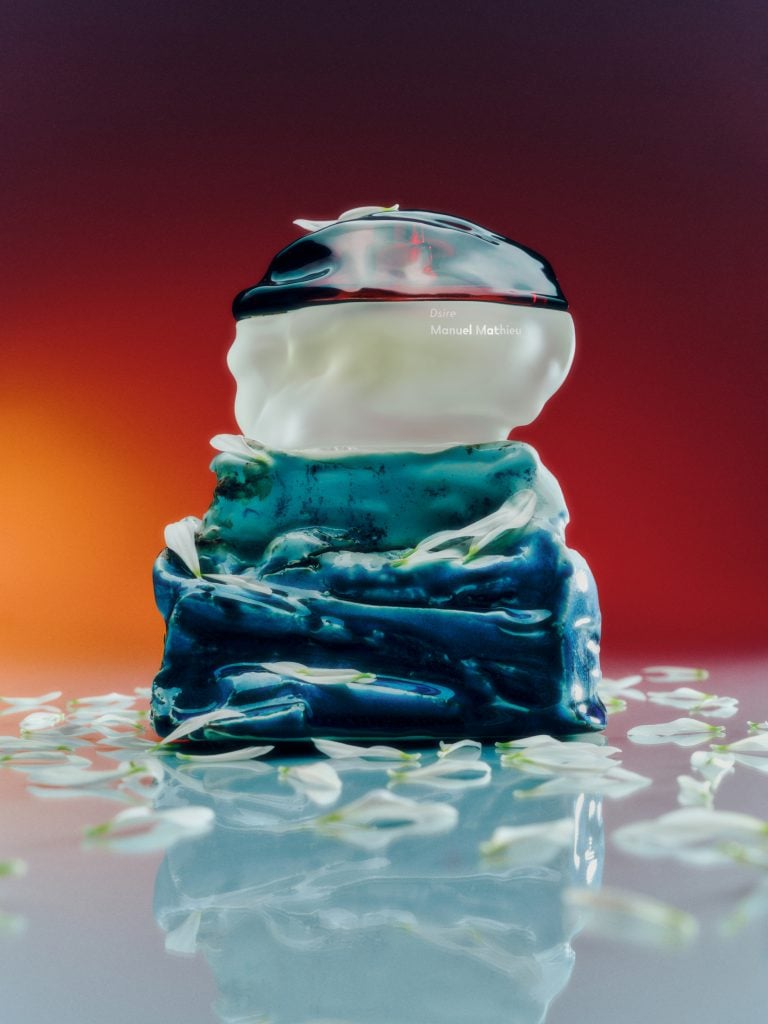
Dsire. Courtesy of Manuel Mathieu Perfume.
Like île noire, Haitian vetiver also plays a role in Dsire, an intensely tropical fragrance that stars frangipani, the yellow and white flower native to Haiti, which was grown in the garden of Mathieu’s childhood home.Rounding out the collection is ECCCO— in many ways, a fantastical evolution of île noire. It’s inspired by a story of an imagined volcanic eruption covering the black island, before the lava seeps into the sea. The ripples it causes are referenced by the triple “c” in the name. Here, contrasts between citrus and vanilla, leather and sandalwood, seek to capture the drama of a free-flowing volcano.
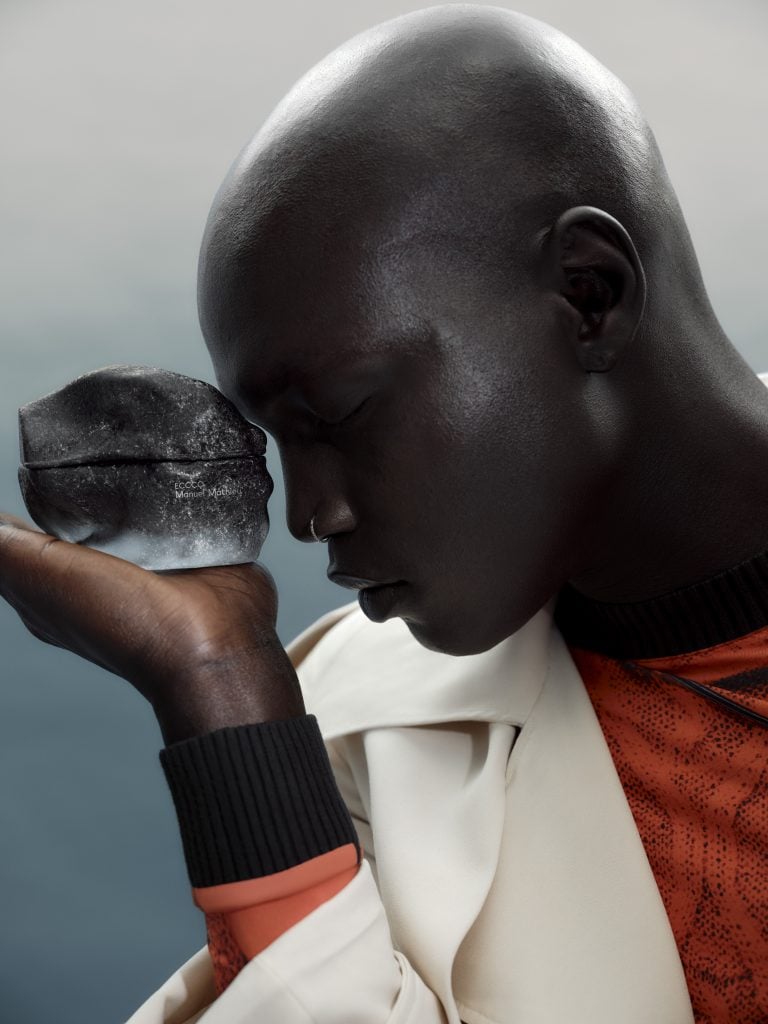
ECCCO. Courtesy of Manuel Mathieu Perfume.
Vessels as Sculptures
And the artistry doesn’t stop at the fragrance, or “juice,” as it’s often referred to itself. “I’m a bit of an obsessive artist, okay?” Mathieu joked. The bottles themselves offer a tangible connection to his more well-known artistic practice, with each based on a sculpture crafted in his ceramic studio, going through numerous iterations before the final form was decided upon. Reproduced in glass, though not at first obvious, the form bears an imprint of his hand that, with its abstracted form echoing the natural landscape replete with mountains and valleys. Notably, the caps too are made of glass, a detail that is extremely rare in the world of perfume.
In the creation of the packaging for the bottles, the white square box reminded Mathieu of a pedestal, the kind found in every museum or gallery. In keeping, he has reproduced one of his watercolor paintings on it. No less attention was paid to the booklet included in each box, which includes details about the fragrance and its inception and, most importantly, a portrait and profile of his chief collaborator, Karagueuzoglou.
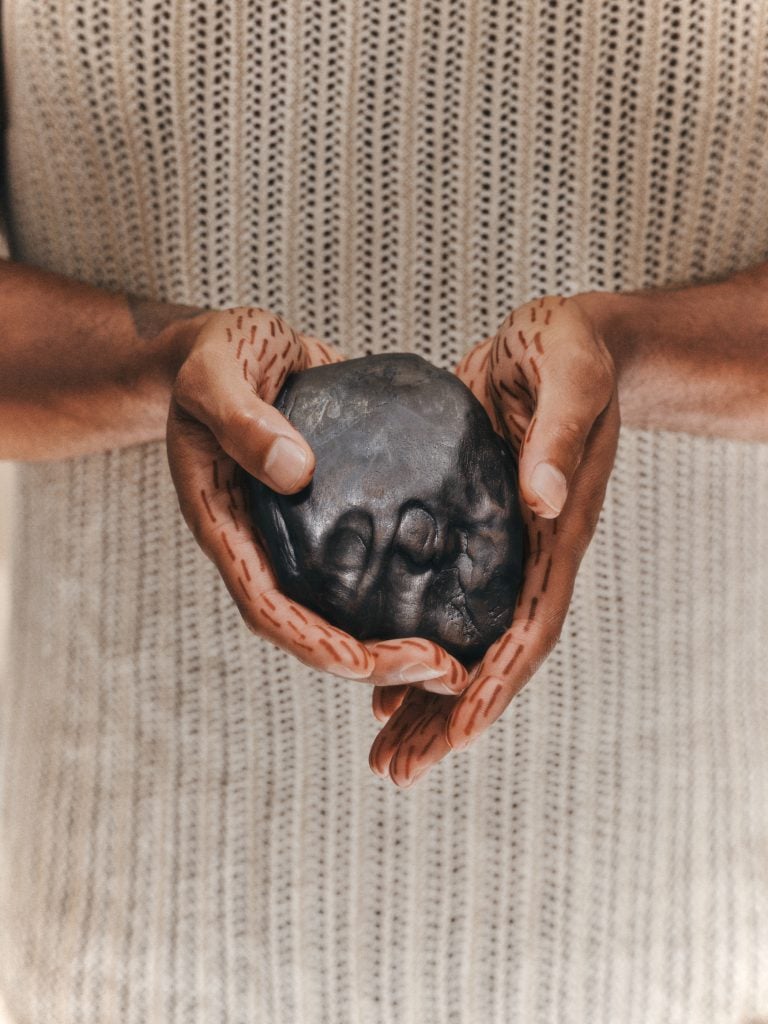
Courtesy of Manuel Mathieu Parfums.
In the world of perfume, the nose behind fragrances is more often than not overlooked and unmentioned. While many might not recognize Karagueuzoglou’s name, they have likely encountered her work. She has crafted perfumes for numerous major labels, from Carolina Herrera and Salvatore Ferragamo to Yves Saint Laurent and Giorgio Armani, as well as beauty brands like Lancôme, and niche heavy hitters such as Memo Paris and Penhaligon’s.
Mathieu’s collaboration with Karagueuzoglou (they remain in close contact) follows two other recent collaborative projects the artist has undertaken, reflecting a new and expanding facet of his artistic practice.
In 2022, the artist received a major public art commission in Montreal for five large mosaic panels installed in the city’s Edouard-Montpetit REM station, Le mont habité / The inhabited mountain, which will be unveiled in 2025. For the project, Mathieu worked with Saskia Siebrand of Mosaika Art and Design. Working with Siebrand and the studio’s expertise, his composition, developed in Mathieu’s drawings and paintings, was able to be transformed into complex, large-scale compositions. “I was basically acting as a creative director or artistic director on the project because sometimes I would go and place certain mosaics, and sometimes I would stay on the balcony [overlooking the mosaic] and then go, ‘What about this? What about that?’”
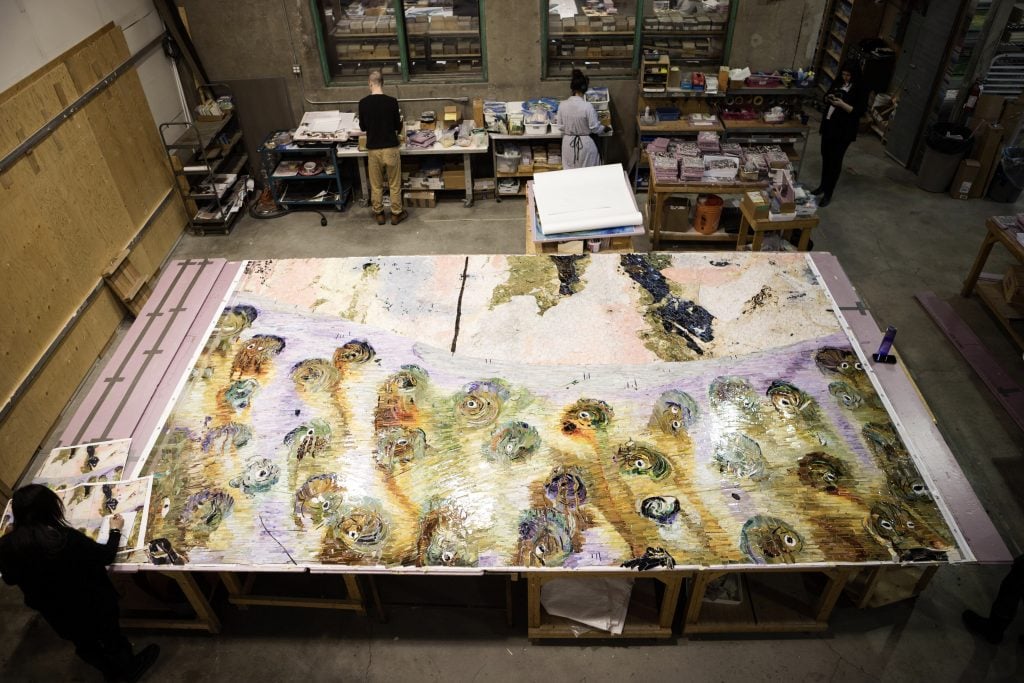
Mosaika studios, Montréal, Canada, 2023. Photo: Jeanne Tétreault. Courtesy the artist.
The following year, in 2023, he debuted his first film, Pendulum, which won best short film at the International Festival of Films on Art in Montreal. Using nonlinear storytelling, symbolism, and choreographed movement, the film follows a woman who is a keeper of knowledge carrying “the liberation of her soul.”
Mathieu’s openness to collaboration in his work, rather than taking an auteurist approach, undoubtedly fueled the success of his work with Karagueuzoglou and the creation of three fragrances. In Dsire, for instance, the duo included inspirations from Karagueuzoglou’s experiences in motherhood.
“I’m obviously not a mother, but I wanted to address the warmth, the comfort that comes with motherhood, and Juliette talked about her two wonderful daughters, and she said she remembers when [her youngest] was a baby, she used to smell her and she knew at the time that it was the last time that she was going to experience a smell like that,” said Mathieu. “And I told her, ‘I want us to use this, the feeling of mourning, I want to integrate that into the sillage of the perfume. I create a territory for her to bring something that I cannot bring.”
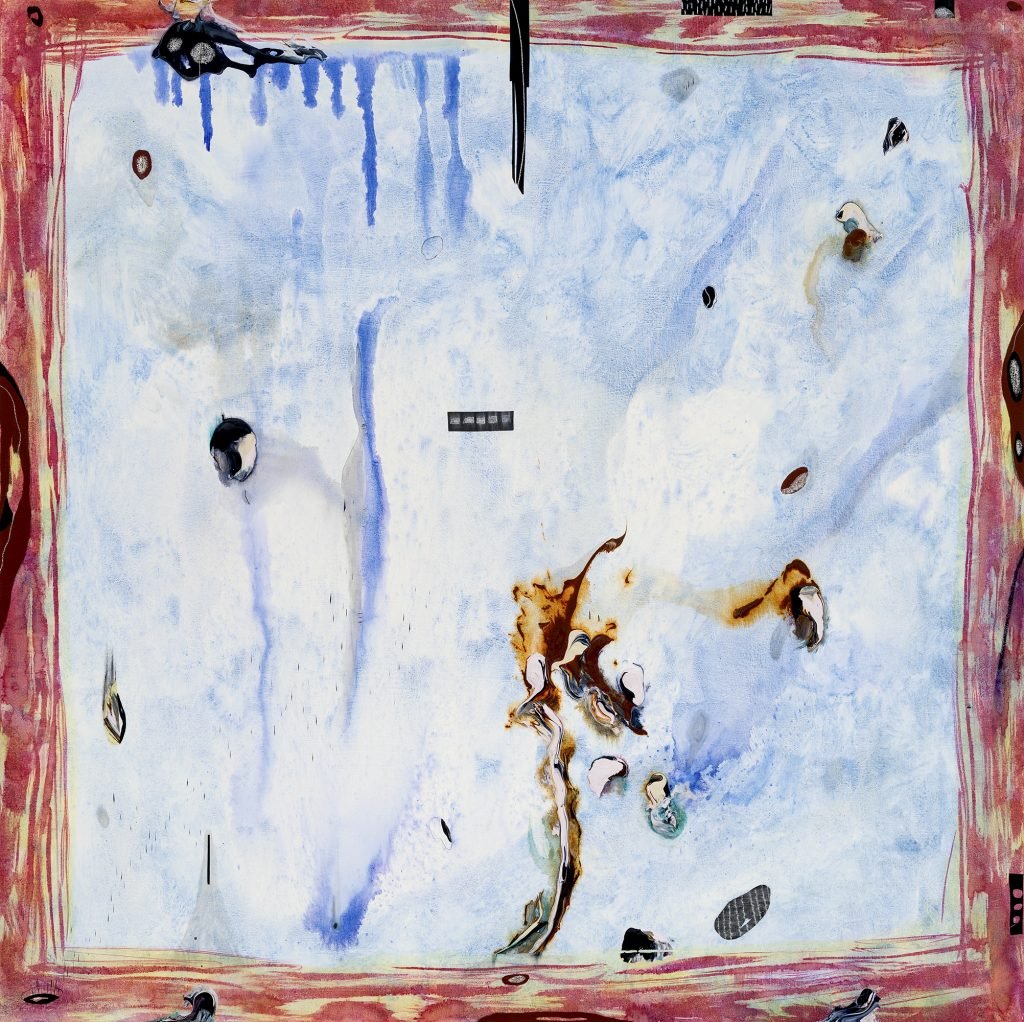
Manuel Mathieu, Framing the Abyss (2022). Courtesy of the artist.
The creation of these artist perfumes comes at an interesting juncture both in the art and perfume worlds. While traditionally visual art-focused spaces are opening up to the world of scent, simultaneously there is a broader appetite for creative perfume, as opposed to generic, mass-market productions simply with a fancy label slapped on. The culmination of these two trends, it appears, is resolved through the collaboration of an artist and master perfumer, with the result being fragrances that bear a distinctly artistic profile while still being wearable.
“The only way you can do something bigger than yourself is by really acknowledging the contribution of other people, and this is one of the things that I value a lot and that I always try to do,” said Mathieu. “… There’s an architecture [like in painting] that I enjoy a lot as a visual artist, that I bring into my discussions with Juliette. We’re having a lot of fun and I hope that we get to do that for a long time because it’s an extension of my art practice now.”
This post was originally published on this site be sure to check out more of their content
